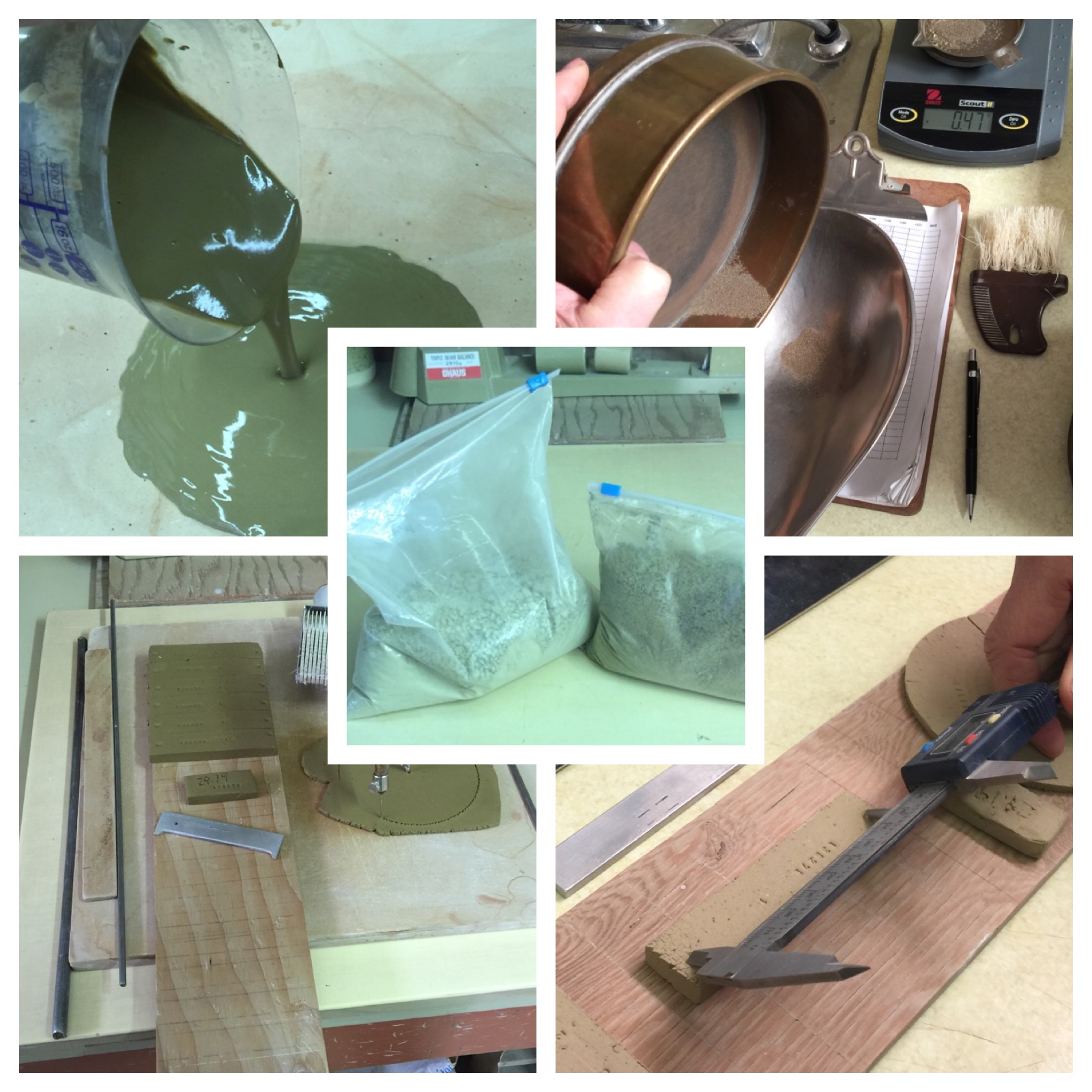| Monthly Tech-Tip | No tracking! No ads! |
A must-have: Laboratory variable speed propeller mixer
If you are at all serious about testing glazes and clay bodies, you need one of these. There are other methods, but nothing else comes close to this. It is the most valuable and frequently used tool in any ceramic bodies and glazes testing lab or classroom. This is the Lightnin brand, they are expensive but high quality. This is a 1/20 hp variable speed unit, it could be $4000 new! But you can get them used on ebay.com (the industrial mixers are most common, lab mixers are jealously guarded). This one uses a 7.9mm dia (5/16") shaft. We adapted a mount (to give it vertical adjustment) from small drill press.
Related Pictures
A high-quality inexpensive studio/lab mixer is here

This picture has its own page with more detail, click here to see it.
For many years we have searched for a credible alternative to our Lightnin lab mixer. We found this unit on Amazon but then bought it from FristadenLab in Nevada. These are made in China but packaged, documented, shipped and supported in Nevada. This cost about $300US (a programmable one costs a little more). The first impression is how heavy the unit is. The base is 1/4" solid steel. The rods are all solid stainless 5/8". The clamp is also solid metal. The shaft is 3/8" and is held in place by a good quality chuck which enables easy release. The propeller is about 2 1/2" in diameter and screws on, it would thus be easy to 3D print other propellers and mount them on a hex nut. The locking mechanism enables mounting at an angle (important when trying to achieve the highest speed without sucking air bubbles). It plugs in via a 24v DC adapter (it has a DC stepper motor so it responds gradually to speed changes selected on the dial). On this occasion, I mixed 3500g of plaster in this 2 IMP gallon bucket (2.5 US gallon) with no problem. It runs completely silent. A propeller mixer like this is a great start to DIY glazes.
Testing your own native clays is easier than you think

This picture has its own page with more detail, click here to see it.
Some simple equipment is all you need. You can do practical tests to characterize a local clay in your own studio or workshop (e.g. our SHAB test, DFAC test, SIEV test, LDW test). You need a gram scale (preferably accurate to 0.01g) and a set of callipers (check Amazon.com). Some metal sieves (search "Tyler Sieves" on Ebay). A stamp to mark samples with code and specimen numbers. A plaster table or slab. A propeller mixer. And, of course, a test kiln. And you need a place to put all the measurement data collected and learn from it (e.g. an account at insight-live.com).
Home-made propeller mixer with mount and switch

This picture has its own page with more detail, click here to see it.
This is a heavy-duty one-speed mixer, homemade, with a 1/3 hp motor. It can handle up to ten gallons of high-density glaze or body slurry.
Printing a prototype propeller for my Lightnin lab mixer

This picture has its own page with more detail, click here to see it.
The worn-out stainless propeller was going to cost $500 to replace. But the size and pitch of the blades was not ideal anyway. So I drew them using Fusion 360 and printed in PLA plastic, this enabled experimenting with different sizes and pitches. How about getting a tight fit on the shaft? No problem. I measured it with calipers and printed that size. It was a little tight so I printed it slightly larger. One issue: Mixing slurries with hot water bends the blades and the collar loosens.
The recipe mixing area in the Plainsman Clays lab

This picture has its own page with more detail, click here to see it.
This is my lab work area of mineral, frit, chemical, stain and metal oxide powders for mixing test glazes and clay bodies. Not shown is my propeller mixer, perhaps the most important piece of equipment we have. And my plaster table for dewatering clay body slurries. Building up something like this, over time, is practical for any serious potter, most of these powders are inexpensive. Within minutes I can plan and enter a recipe into my Insight-live.com account, give it a code number, print it and weight it out.
Videos
Links
| Articles |
Understanding the Deflocculation Process in Slip Casting
Understanding the magic of deflocculation and how to measure specific gravity and viscosity, and how to interpret the results of these tests to adjust the slip, these are the key to controlling a casting process. |
| Glossary |
Engobe
Engobes are high-clay slurries that are applied to leather hard or dry ceramics. They fire opaque and are used for functional or decorative purposes. They are formulated to match the firing shrinkage and thermal expansion of the body. |
| Glossary |
Blunging
In ceramics, the production of glazes and casting slips requires dispersing powders into water to create slurries. A good mixer is essential. |
| Glossary |
Propeller Mixer
In ceramic studios, labs and classrooms, a good propeller mixer is essential for mixing glaze and body slurries. |
| Glossary |
Slurry Up
The process of slurrying a clay body powder and dewatering it on a plastic slab or table. |
Got a Question?
Buy me a coffee and we can talk

https://digitalfire.com, All Rights Reserved
Privacy Policy

